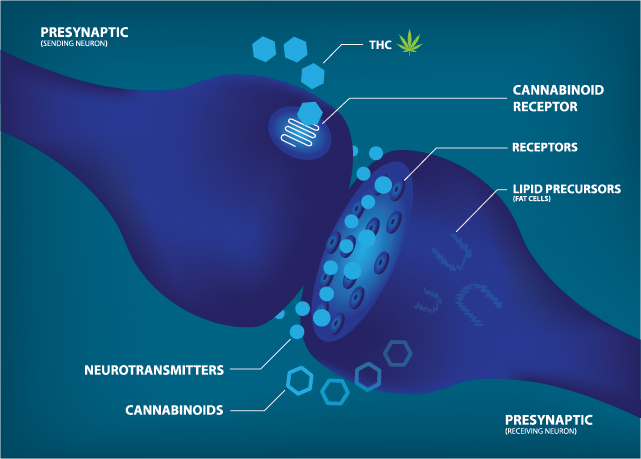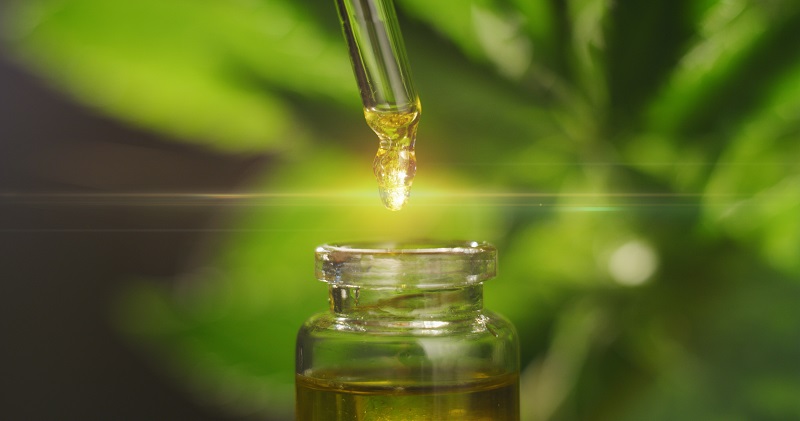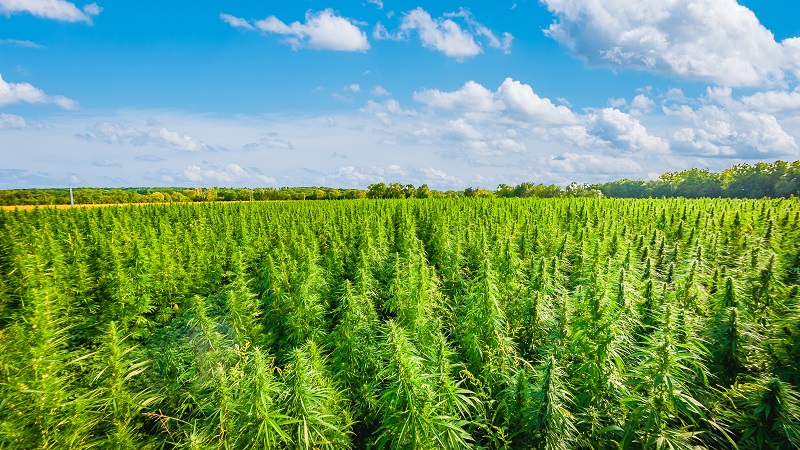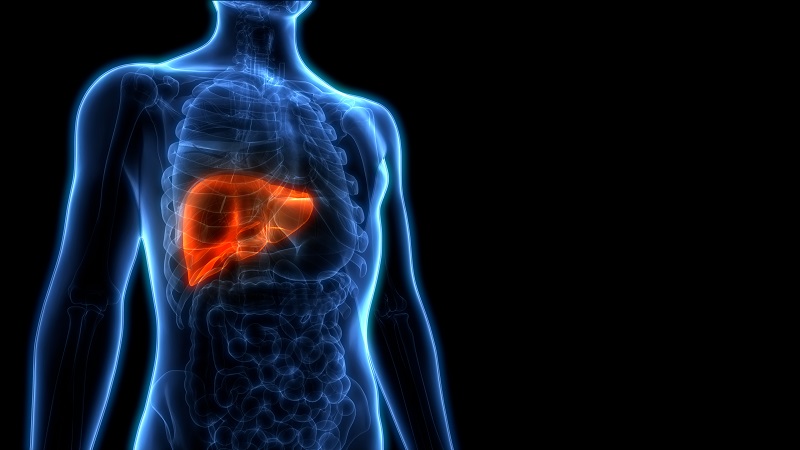CBD Can Improve Bone Health and Heal Fractures: Here’s How

Fractures and degenerative conditions such as osteoporosis impact bone health significantly, leading to loss of bone mineral density, pain, inflammation, stiffness, and immobility. One of the key components of bones is a protein called collagen that imparts structure and strength to tissues. Loss of collagen is also linked to bone weakness.
While surgery and prescription pain medications are the traditional treatment options for wide-ranging bone health conditions, including fractures, the recent focus is on finding non-invasive, safe, and non-addictive treatment options.
CBD, derived from the Cannabis Sativa plant, is a non-toxic, safe, and non-psychogenic option to treat pain and inflammation associated with bone injury, as well as to promote fracture healing.
Multiple animal models and in vivo studies have shown some promising results. Researchers have found that CBD administration in the form of pain relief spray, pain relief roll-on, body oil, or cream is effective against a range of conditions. These bone conditions include spinal cord injury, disc degeneration, post-surgical pain, and arthritic pain. CBD promotes the healing of bones after fractures while increasing bone density and preventing bone mineral loss.
All you need to know about CBD
CBD stands for ‘cannabidiol,’ which is one of the many compounds found in the hemp plant. The hemp plant’s botanical name is Cannabis Sativa that belongs to the family of cannabaceae, a small group of flowering plants. Cannabis Sativa or hemp plants are grown in tropical and temperate regions for recreational and medicinal purposes. The plant is also a rich source of fiber. Industrial-grade hemp derivatives are used to make fuel, paint, solvents, and other products.
While there are many varieties of the hemp plant, the shorter varieties of the plant have more of a psychoactive compound called Δ9-tetrahydrocannabinol or THC, while the stouter, erect hemp plant varieties have less THC and more of other compounds.
There are 400 or more chemical compounds in the Cannabis Sativa plant, and close to 66 out of them are categorized as cannabinoids. These are a group of chemicals that are unique to the Cannabis Sativa plant. While THC is a well-known cannabinoid due to its psychoactive effect, other cannabinoids are valued for their therapeutic potential.
Other cannabinoids include:
- Cannabidiol (CBD)
- Cannabidiolic Acid (CBDA)
- Cannabinol (CBN)
- Cannabichromene (CBC)
- Cannabigerol (CBG)
- Tetrahydrocannabivarin or THCV
CBD’s pharmacological properties are attributed to the eighteen chemical groups present in it. These are amino acids, fatty acids, nitrogenous compounds, terpenes, hydrocarbons, and sugars.
While both marijuana and hemp plants belong to the same category of Cannabis Sativa plants, some varieties of Cannabis Sativa plants are grown exclusively for extracting CBD. As per the U.S. FDA (Food and Drug Administration) classification, marijuana plants are those that have a THC content of more than 0.3%. Hemp plants cultivated for CBD extraction have less than 0.3% THC.
CBD is extracted from the entire Cannabis Sativa plant using advanced extraction techniques. It is then used in isolate or concentrate forms to make topical products, such as pain relief spray, facial cream, eye serum, sleeping mask, and anti-aging face creams.
The therapeutic action of CBD
CBD, unlike THC, has no psychoactive effect. In other words, it does not get you ‘high’ but exerts anxiolytic (anti-anxiety), antipsychotic, and alerting effects. Apart from influencing alertness and mood, CBD also regulates other physiological processes in the body. These effects are attributed to the endocannabinoid system or ECS. Scientists discovered in 1988 that there are ‘receptor’ sites in the brain of humans (and other mammals) that interact with cannabinoids present in Cannabis Sativa. Named cannabinoid receptors (CB1), these are the most wide-spread neurotransmitter receptors in the brain.
Later, the other group of cannabinoid receptors (CB2) was discovered in the immune system, which led to the unraveling of the endocannabinoid system, which are neurotransmitters that occur naturally in the human body. Following this, scientists discovered two major endocannabinoids termed ‘anandamide’ and ‘2-arachidonoylglycerol (2-AG),’ apart from others that are lesser-known. These neurotransmitters, along with the cannabinoid receptors, work to maintain a delicate balance of physiological functions. Natural endocannabinoids are produced in the body in response to internal imbalances, which interact with CB1 and CB2 to stimulate chemical responses that restore the balance. At times, clinical endocannabinoid deficiency can result either due to not enough of these neurotransmitters being released or due to a lack of cannabinoid receptors. External factors such as stress, medications, or foods are also linked to impaired ECS function.
While the brain is densely populated with CB1 receptors, both CB1 and CB2 receptors are found in intestines, liver, pancreas, bone cells, and other tissues.
The exact mechanism of how cannabinoids influence cannabinoid receptors or the ECS is not known. However, scientists speculate that CBD interacts in an indirect way with cannabinoid receptors and prevents endocannabinoids from getting broken down. By restoring the functioning of the ECS system, topical CBD-integrated pain relief spray and pain relief roll-on help control inflammation, pain, and promote fracture healing.
Therapeutic potential of CBD
Both anecdotal and scientific research data suggest that CBD is a non-invasive and safe alternative option to treat many conditions, including:
- Fracture healing and bone health
- Autoimmune diseases (rheumatoid arthritis)
- Metabolic syndrome
- Degenerative and neurological illnesses (dementia, epilepsy, Alzheimer’s, stroke, multiple sclerosis, traumatic brain injury)
- Neuropsychiatric syndromes, such as ADHD and autism
- Cardiovascular dysfunction
- Inflammatory bowel disorders, including colitis or IBS
- Skin conditions, including acne, atopic dermatitis, psoriasis, wrinkles, fine lines.
What are fractures, and why do they occur?
In simple terms, fractures refer to broken bones. More than a million fractures occur in the U.S. every year. The bone fracture risk for 158 million or more people over the age of 50 across the world is high, according to research featured in Osteoporosis International, and this figure is estimated to double by 2040.
A majority of bone fractures occur due to stress or high-force impacts, such as falls or external trauma.
However, certain medical conditions such as osteoporosis, brittle bone disease, or certain cancers that weaken the bones can also lead to fractures.
There are many different types of fractures based on the type of bone, length of fracture, and extent of breakage. The broad categories of bone fractures include:
- Closed fracture where the skin is unbroken
- Open fracture where the skin is broken – this is also termed as a compound fracture
- Displacement where a gap is created between the bone ends, often necessitating surgery
- A partial fracture where a part of the bone is broken
- Complete fracture, where the bone is broken completely
- A hairline or stress fracture that involves a tiny crack in the bone
Constituents of bone
Bone is made up mostly of collagen fibers (collagen is a type of protein that imparts structure and strength to bones and tissues). Other constituents include inorganic bone minerals and water. The major minerals are calcium and phosphorus, although the bone contains other minerals in smaller amounts as well. The ends of bones are cushioned and protected by cartilage, which is an elastic, flexible, and smooth connective tissue that is also composed of collagen. Bones are connected to muscles with the help of fibrous tissue called tendon, while ligaments connect bone to bone and impart stability.
Researchers have found that collagen improves bone strength and metabolism in people who have chronic bone conditions, such as osteoporosis and osteoarthritis. Other randomized studies also support the fact that collagen helps strengthen the bone by improving bone mineral density.
How CBD helps provide relief from pain and inflammation
The most common symptom of any type of bone injury or fracture is pain. While pain medications such as opioids and NSAIDs (non-steroidal anti-inflammatory drugs) are prescribed for pain relief, there is growing concern over overdoses and addiction.
CBD, being non-addictive, is seen as a safe and effective treatment for pain. A study found that a majority of participants reported relief from pain with CBD while there were no side effects associated with other pain medications. An animal model study published in the European Journal of Pain found that CBD pain relief spray controlled pain and inflammation.
Mobility and recovery – Intense workouts or external trauma can lead to muscle fibers, tendons, or ligaments suffering microscopical damage, triggering inflammation, stiffness, and soreness. Certain degenerative, progressive conditions, such as multiple sclerosis or osteoarthritis, also lead to stiffness and immobility.
A comprehensive review conducted in 2018 found that CBD had the potential to minimize inflammation and pain while improving mobility in people who have multiple sclerosis. CBD topical products in the form of pain relief roll-on or topical pain relief spray aids in recovery post-workout while reducing the stiffness of joints.
CBD Plus products and Recovery Lotion incorporate a blend of potent carrier oils integrated with CBD isolate. These topical sprays, creams, and oils get absorbed quickly through the skin to provide optimal relief from soreness and pain.
CBD for fracture healing
When a bone breaks, the body responds by building callus on the site of the fracture that helps seal the gap in the broken bone ends. Studies show that CBD boosts collagen production and promotes fracture healing.
CBD stimulates the expression of mRNA in bone cells that encode a specific enzyme linked to collagen stabilization and crosslinking and stabilization. Researchers used infrared spectroscopy that showed that CBD enhanced the collagen crosslink ratio that led to fracture healing.
In Israel, scientists have found that CBD enhanced fracture healing significantly in animal models. The study, featured in the Journal of Bone and Mineral Research, was conducted by researchers at the Hebrew University of Jerusalem and Tel Aviv University. It was found that cannabidiol promoted thighbone (mid-femoral) fracture healing in rats. The researchers found that CBD made bones stronger while healing and promoted the collagenous matrix maturation, which, in turn, enhanced bone mineralization. Once the bones are treated using CBD, they become tougher and harder to break, according to the researchers.
Studies conducted in the past also have shown the therapeutic potential of CBD concerning bone health.
A 2009 study featured in International Immunopharmacology sought to explore the efficacy of 5 milligrams of CBD (cannabidiol) in treating periodontitis in rats. Periodontitis is a chronic gum infection that leads to gum inflammation, tooth loss, and bone destruction. Researchers administered CBD for a month and analyzed alveolar bone loss. They found that in animals that were given 5 milligrams of CBD, there was reduced bone loss and inflammation.
In the same year, another study highlighted that endocannabinoids and cannabinoid receptors influence bone metabolism. It was found that bone absorption in laboratory experiments was reduced by CBD.
A comparatively recent study conducted in 2017 featured in the European Journal of Pharmacology. Scientists studied CBD’s therapeutic effects on spinal cord injury in rats. They found that CBD improved bone volume and enhanced both the volume and thickness of the cancellous bone. CBD administration, according to this study, reduced spinal cord injury severity while preventing bone loss.
Selecting the right CBD-integrated pain relief spray
If you reside in a town or city where CBD has been legalized for medicinal use, such as for pain and inflammation relief, you will be able to purchase topical CBD products such as pain relief spray from a local regulated dispensary/pharmacy.
Quality of CBD products is the top priority as there is a high risk of cannabis plants absorbing heavy metals in the soil through pesticides.
If you are looking for high-quality CBD-integrated Pain Relief Spray, Pain Relief Cream, CBD Plus, Pain Relief Roll-On, or Recovery Lotion, evaluate the website of manufacturers. The website should contain a detailed description of the kind of research the manufacturer is conducting on CBD, as well as the credentials of the research (R&D) team. It is also necessary to study the ingredient lists on CBD product labels to see the amount of CBD each product contains. Typically, CBD isolates or concentrates contain either 100 milligrams or 300 milligrams of pure CBD.
More articles:










